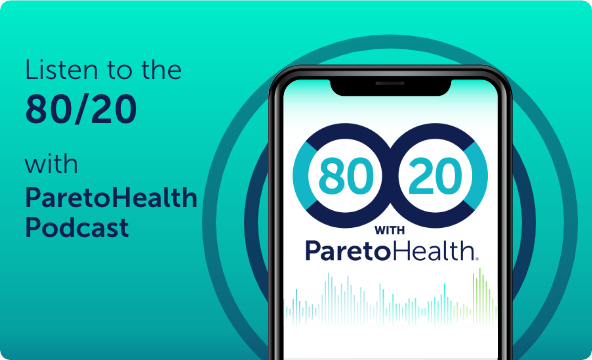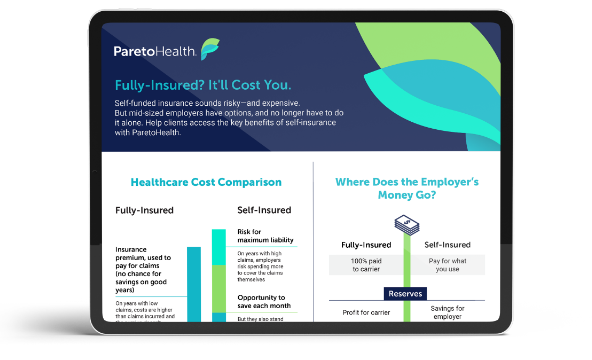The role of a Pharmacy Benefits Manager (PBM) in your health plan
Learn how a Pharmacy Benefits Manager (PBM) can help you get the most value from your health plan
Have you paid for a health plan that provides prescription drug coverage? If so, you’ve likely been impacted by the work of a pharmacy benefits manager (PBM).
Prescription drug costs have skyrocketed over the years – and some argue that PBMs are a contributing factor.
But what is a PBM? What do they do, and why do we need them?
Great questions. Let’s explore them together.
What is a pharmacy benefits manager (PBM)?
A PBM is an entity that works as an intermediary between two parties: those who need pharmacy benefits (i.e., you and your insurer/health plan provider) and those who supply prescription drug benefits (i.e., pharmacies and drug manufacturers).
PBMs were first formed in the 1960s to help insurers – and the individuals and companies they insured – reduce spending, offer clinical insight, and provide quality pharmacy benefits.
Essentially, PBMs are middlemen with two main roles:
- Create and maintain formularies, or lists of drugs that a plan covers, and
- Save costs and secure discounts for insurers on pharmacy benefits by negotiating with drug manufacturers and pharmacies.
…at least, that’s how they’re supposed to work.
The changing face of PBMs today
Over the years, we’ve faced a steady increase in the cost of prescription drugs, pharmacy benefits, and health plans.
PBMs today are still supposed to serve those two leading some, but this is complicated by a few of the ways they get paid.²
Tactic #1: Rebates
One revenue source for PBMs is rebates.
Rebates are discounts provided by the drug manufacturer to the PBM that help offset the cost of the medication in exchange for a place on the PBM’s formulary.
As we mentioned earlier, a formulary is a list of preferred drugs that your insurance will cover, and manufacturers are driven to get their drugs on these lists for a key reason: increasing their market share.³
PBMs, in an ideal world, should pass these rebates to patients or plan sponsors directly – but this isn’t always the case. No regulations require PBMs to pass on these rebates or make their rebate amounts public, so it’s difficult to know how much of that money is going back into PBMs’ pockets.³
Tactic #2: Spread pricing
Another tactic employed by many PBMs is spread pricing.
Spread pricing refers to the discrepancies between how much a drug costs at a pharmacy, how much a PBM reimburses the pharmacy, and how much a PBM charges an insurer.
Let’s say a drug costs a pharmacy $6 to buy and dispense. The PBM pays the pharmacy $8, giving them a $2 profit. Then, the PBM bills the insurer $16 for the drug. The PBM made an $8 profit on a drug that only costs $6.⁴ The insurer gets the short end of the stick (and so does the pharmacy), while the PBM comes out on top.
Of course, you don’t see this in your bill – especially if you’re fully-insured. With a traditional fully-insured plan, you’re kept in the dark about how PBMs use the money you’ve paid to provide the pharmacy benefits your employees need.
Tactic #3: Improperly carved-in pharmacy benefits
Improperly carved-in pharmacy benefits are to blame.
In other words, pharmacy and health benefits are both contracted through a single health insurer in fully-insured plans. An employer has a plan with their insurance company, which has a contract with a PBM. The employer has no direct relationship with the PBM.
This arrangement is usually convenient: One vendor provides all your health benefits, making administration easy. Still, there’s sometimes a major lack of transparency regarding pharmacy benefits, and you could be spending unnecessarily on coverage for your employees.
Talk about irony.
If you’re under a fully insured plan, ask yourself, “Is my pharmacy benefits program helping – or hindering – me and my employees?”
The self-insured solution
It doesn’t have to be like this.
Unlike fully-insured plans, self-insured plans allow you to opt for a carved-out pharmacy benefit.5 In a carved-out model, either for specialty drugs or for all pharmacy benefits, employers contract directly with their chosen PBM.
Get more out of your pharmacy benefits
There are definite downsides to some PBMs, but the good news is this: Not all PBMs are created the same.
When given the choice and access to claims data, you can find a PBM that aligns with your goals and interests. You can negotiate your contract to ensure claims transparency, auditing ability, and more. You also have the ability to customize your own formulary to drive behaviors (and cost) to your benefit.
With increased oversight, PBMs can be valuable partners for containing costs rather than a cause of rising ones.
References
¹ParetoHealth (2022) Employee Health Benefits Financing Alternatives. Retrieved June 20, 2022, from https://docs.google.com/gview?url=https://paretohealth.com/wp-content/uploads/2021/07/Financing-Alternative-Infographic.pdf
²ParetoHealth (2022) What is a Fully Insured Plan? Retrieved June 15, 2022, from https://paretocaptive-my.sharepoint.com/:w:/r/personal/dibble_paretohealth_com/_layouts/15/Doc.aspx?sourcedoc=%7Bc7440ff3-9e7e-4085-974b-1fa82db0ae5e%7D&action=view&wdparaid=7430CB5C&cid=b177692d-229a-49e1-9362-843de9c51ea5
³ParetoHealth (2022) What is Self-Insurance? Retrieved June 15, 2022, from https://paretocaptive-my.sharepoint.com/:w:/r/personal/dibble_paretohealth_com/_layouts/15/Doc.aspx?sourcedoc=%7B4a235fc4-a117-452d-9c11-be024c4c0bbe%7D&action=view&wdparaid=32A19736&cid=098fb001-7a56-4ade-b238-fcd02a160933
There’s a Better Way to Do Employee Health Benefits
Join an upcoming webinar to learn how ParetoHealth turnkey employee health benefits solutions deliver the scale and resources mid-sized businesses need to self-insure with total confidence. By combining a captive model with comprehensive medical and pharmacy cost containment strategies, our members realize significant cost savings with multi-year protection.
 December 3, 2023
December 3, 2023 






